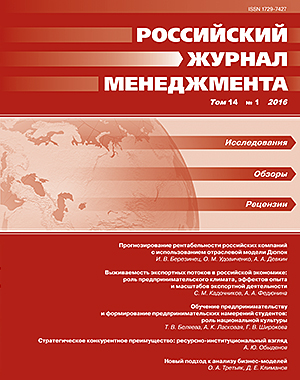Export Survival in the Russian Economy: The Role of Learning-By-Doing, Export Scale and Entrepreneurial Climate in Regions
DOI:
https://doi.org/10.21638/spbu18.2016.102Abstract
In this paper we investigate the impact of business climate and classical gravity variables on trade flows survival from export-oriented non-resource dependent Russian regions. We employ data on electronic copies of cargo custom declarations in 2002–2010 provided by the Federal Customs Service of the Russian Federation and build the database for the more than 45 000 export flows from of 20 export-oriented Russian regions. We test two types of business climate variables — those reflecting the quality of human and financial resources in a region and those reflecting the quality of administrative regulation and hard infrastructure. We control for uncertainty and time effects and find that the effects of improvements of business climate in a region are falling over time and that they are more important for bigger export values. Thus, there is an evidence of presence of learning curve and scale effects for exporters when the latter become more efficient with time in treating with regional-level resources and regulatory environment.
Keywords:
entrepreneurial climate, export, export survival, Russian regions
Downloads
References
REFERENCES IN LATIN ALPHABET
Translation of references in Russian into English
Downloads
Published
How to Cite
Issue
Section
License
Articles of the Russian Management Journal are open access distributed under the terms of the License Agreement with Saint Petersburg State University, which permits to the authors unrestricted distribution and self-archiving free of charge.





